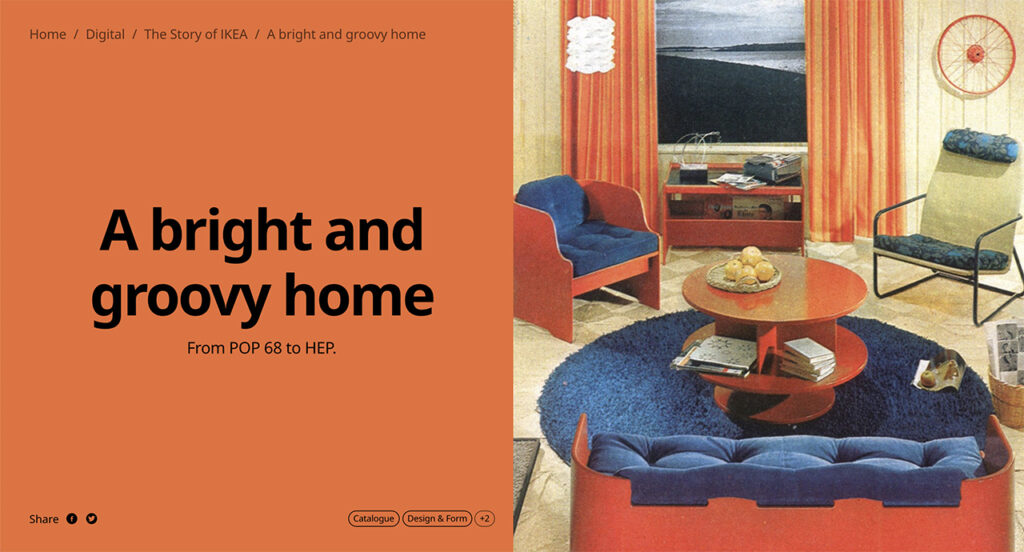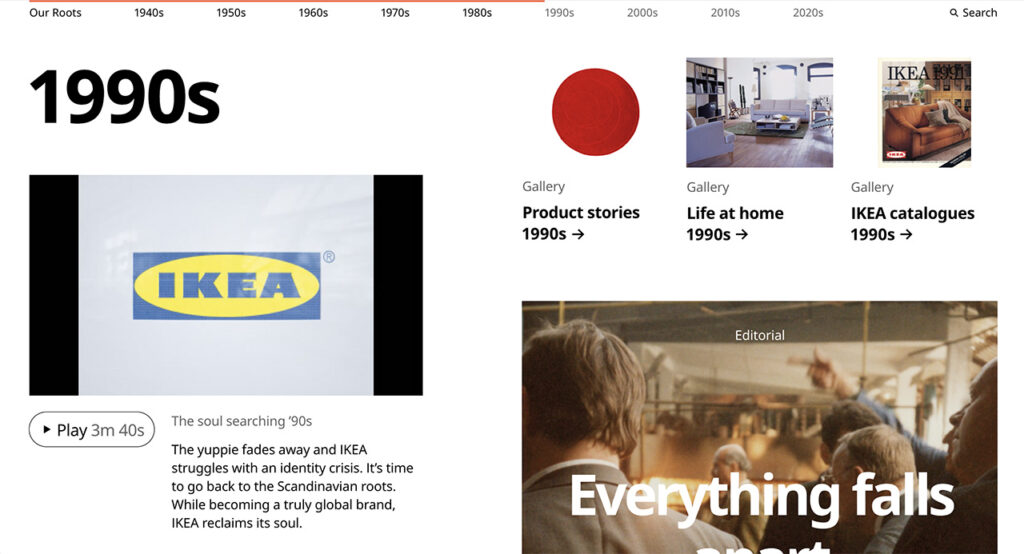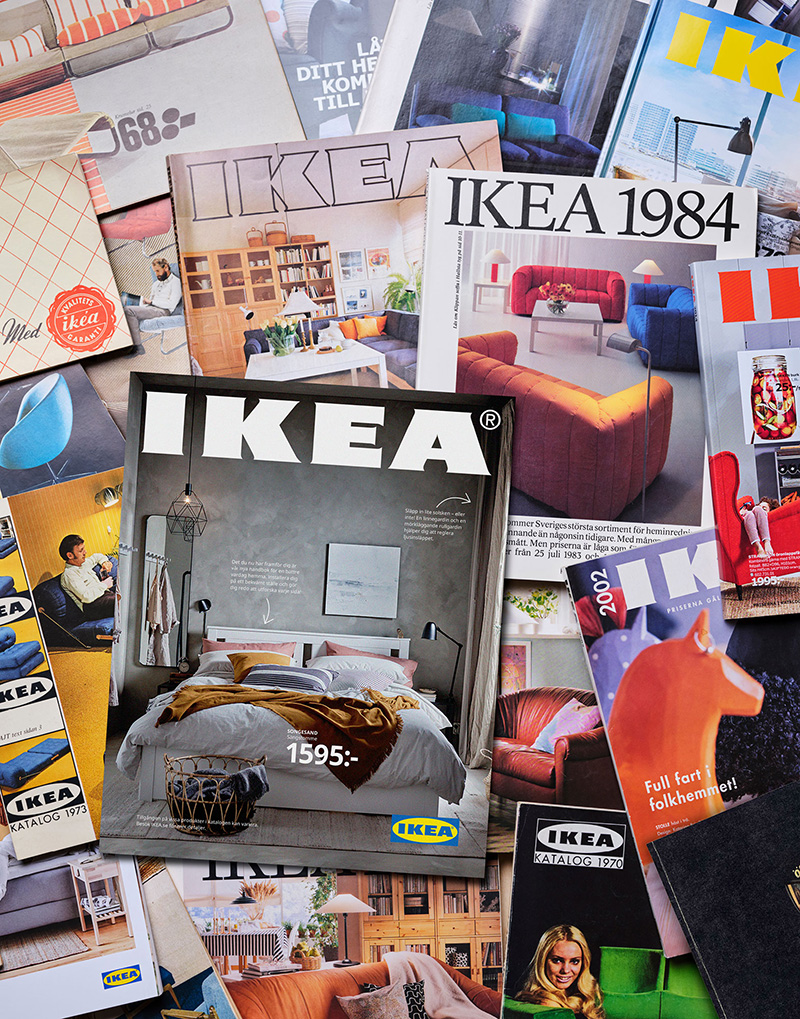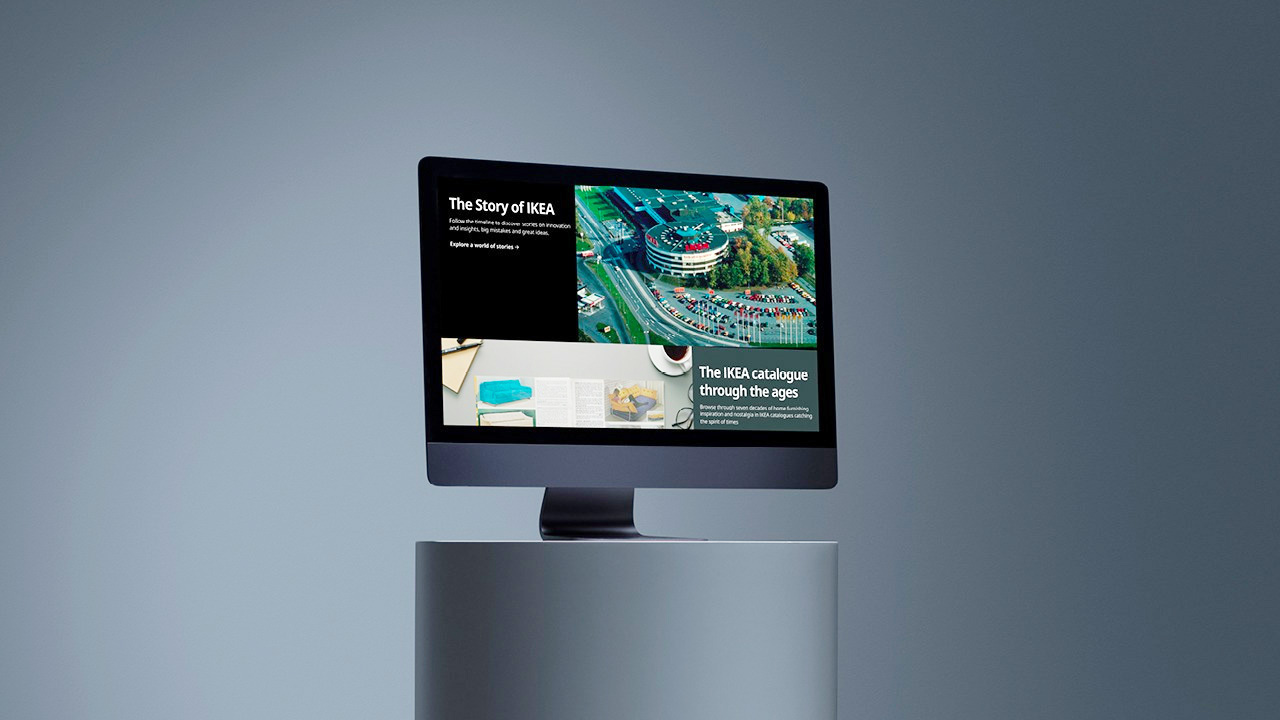Since 2016, the IKEA Museum in Älmhult, Sweden (where the first IKEA store opened in 1958), has been capably telling the story of the homeware brand’s founding, design innovations, and international expansion. But like most other brands and institutions in recent times, the museum has just undergone the most contemporary of transformations: a digital pivot. On September 16, it launched the IKEA Museum Digital as an augment to its physical offerings.
The digital platform features an expansive 70-year timeline stacked with IKEA’s iconic designs, accompanied by images, videos, and more than 100 editorials detailing the brand’s history. IKEA catalogs and other historic marketing materials provide a further comprehensive study into decorative trends, style movements, and consumer patterns that reveal how the home design industry has evolved since IKEA’s founding in 1943.


The IKEA Museum Digital presents 70 years’ worth of IKEA designs through digital catalogs, videos, and more than 100 editorials. Images: IKEA Museum Digital
The project also bears out the digitization of cultural heritage — in this case, simple and functional designs that permeate myriad indoor and outdoor spaces on the planet. This is vital, says Jutta Viheriä, Strategic Initiatives Leader at the IKEA Museum, “to see how life at home has changed during the years, but also to see how IKEA has reacted to people’s needs, and provided solutions when society and people’s needs have changed.” In conversation with Jing Culture & Commerce, Viheriä elaborates on the motivations behind the digital platform.
What spurred the idea for the Museum Digital?
First of all, we wanted to reach all IKEA co-workers around the world, and tell the story of the vast and vibrant history of IKEA, but also to make IKEA Museum accessible to more people globally, especially those who haven’t yet had the opportunity to travel to Älmhult physically to visit us at the heart of IKEA.

The Museum Digital also houses an archive of IKEA catalogs through the years. Image: IKEA
Have there been any challenges in bringing IKEA’s archives online?
We have digitized the Swedish IKEA catalogues through the ages without any challenges. The most challenging part of working with IKEA Museum Digital has been the production of the different product stories, doing the research and finding the correct archive material around them.
Has the digital platform led to an increase in engagement with the museum or the IKEA brand?
The launch of the digital archive with all the Swedish IKEA catalogs created a lot of media interest and engagement — and still does.
What role does the project play in the IKEA Museum’s larger digital strategy?
IKEA Museum has the role of sharing the IKEA story transparently and in this way, strengthens the IKEA brand. When it comes to the digital aspect, the digital museum is a “best practice” when it comes to IKEA’s visual identity.
What are the future plans to grow or develop the platform?
We will continue to add stories about different topics. We are also monitoring which stories are most engaging and what people would want to know about IKEA and its history. Internally, IKEA Museum Digital can work as a learning tool to understand where we come from and how our heritage, culture, and values are an important part of how we act and do business.



